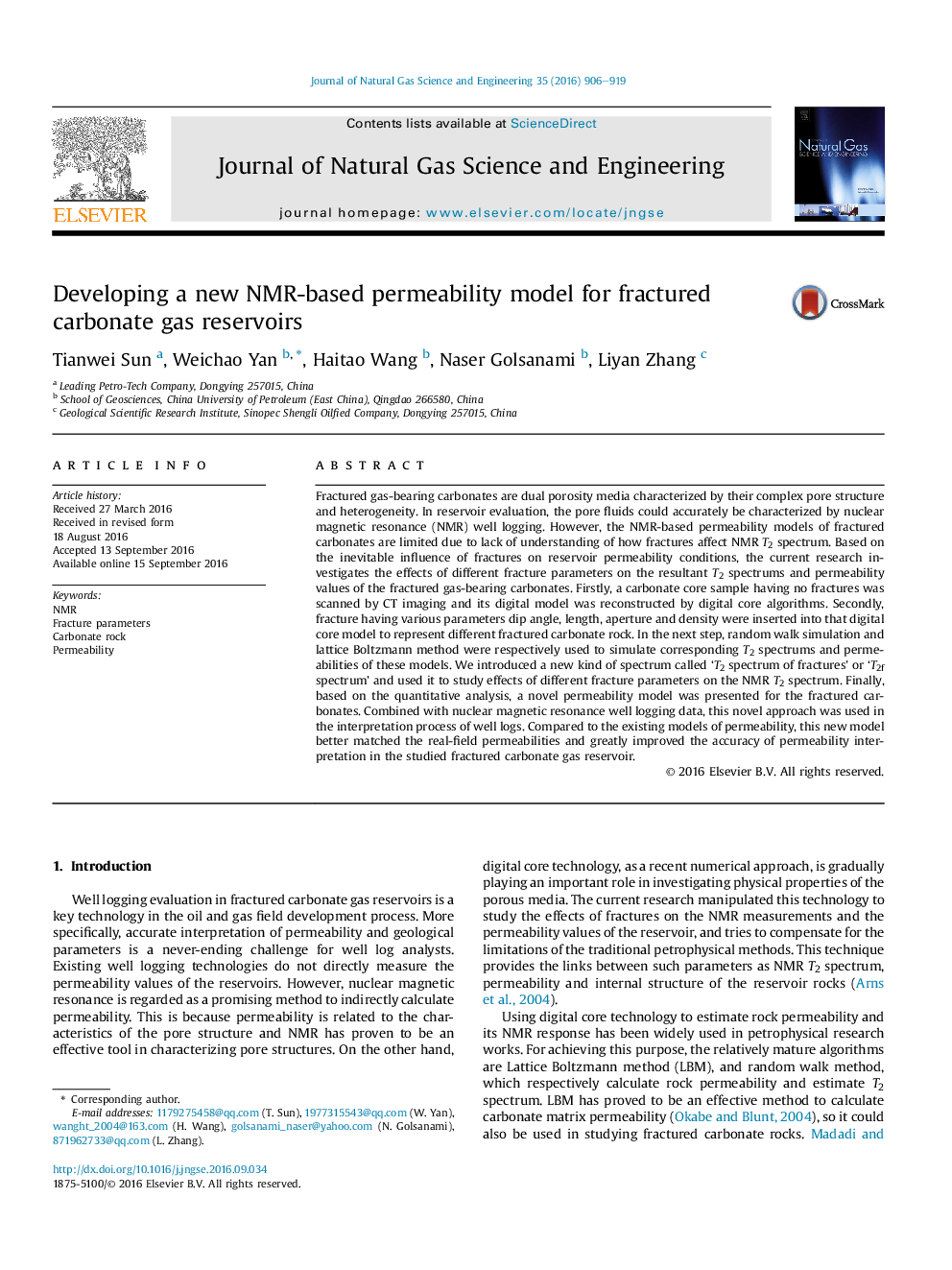| Article ID | Journal | Published Year | Pages | File Type |
|---|---|---|---|---|
| 6481596 | Journal of Natural Gas Science and Engineering | 2016 | 14 Pages |
â¢Effects of fracture parameters on the NMR response and permeability were studied.â¢Digital rock physics and 2D grid algorithm were employed to develop required models.â¢A new permeability model was developed for fractured carbonates in laboratory.â¢The developed model was up-scaled in a well and was validated by core analyses.â¢Permeabilities from new model better matched core measurements inside the well.
Fractured gas-bearing carbonates are dual porosity media characterized by their complex pore structure and heterogeneity. In reservoir evaluation, the pore fluids could accurately be characterized by nuclear magnetic resonance (NMR) well logging. However, the NMR-based permeability models of fractured carbonates are limited due to lack of understanding of how fractures affect NMR T2 spectrum. Based on the inevitable influence of fractures on reservoir permeability conditions, the current research investigates the effects of different fracture parameters on the resultant T2 spectrums and permeability values of the fractured gas-bearing carbonates. Firstly, a carbonate core sample having no fractures was scanned by CT imaging and its digital model was reconstructed by digital core algorithms. Secondly, fracture having various parameters dip angle, length, aperture and density were inserted into that digital core model to represent different fractured carbonate rock. In the next step, random walk simulation and lattice Boltzmann method were respectively used to simulate corresponding T2 spectrums and permeabilities of these models. We introduced a new kind of spectrum called 'T2 spectrum of fractures' or 'T2f spectrum' and used it to study effects of different fracture parameters on the NMR T2 spectrum. Finally, based on the quantitative analysis, a novel permeability model was presented for the fractured carbonates. Combined with nuclear magnetic resonance well logging data, this novel approach was used in the interpretation process of well logs. Compared to the existing models of permeability, this new model better matched the real-field permeabilities and greatly improved the accuracy of permeability interpretation in the studied fractured carbonate gas reservoir.
